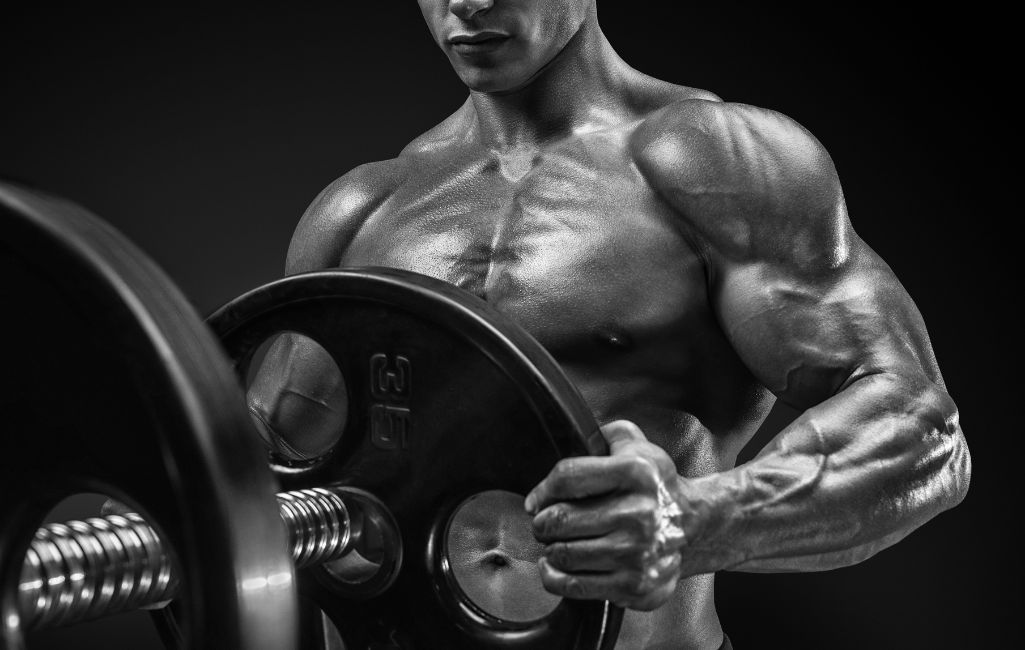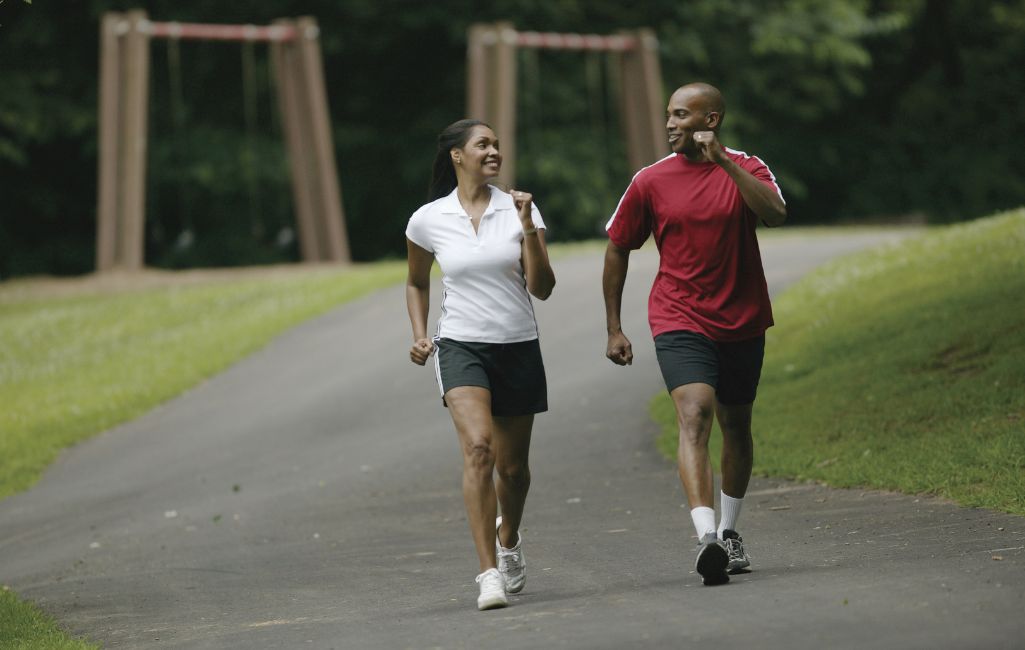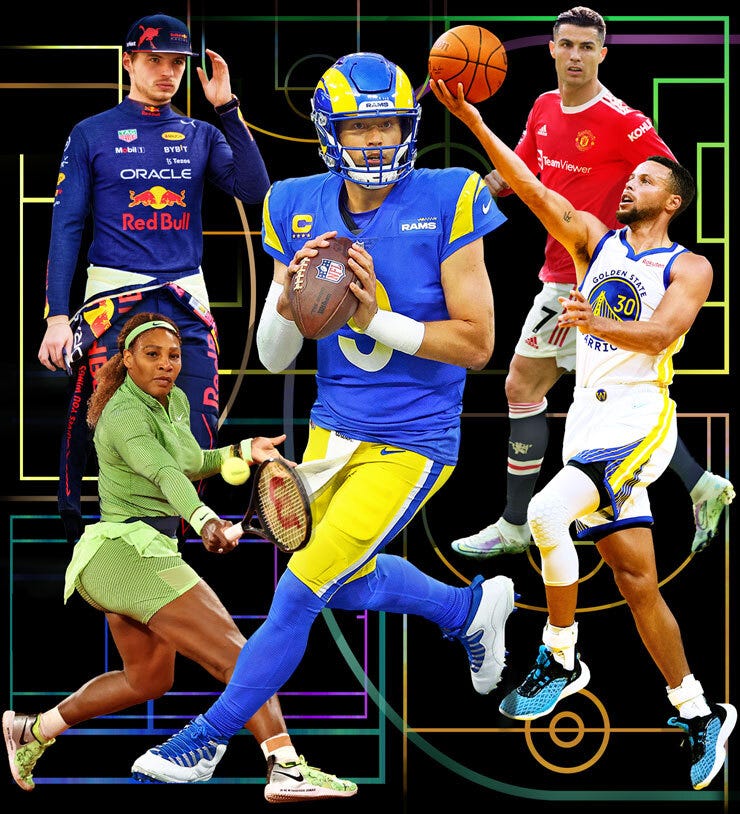What Sport Requires the Most Fitness: Unleash Your Athletic Potential
Boxing requires the most fitness due to its intense and rigorous physical demands. With its combination of high-intensity cardio, strength, speed, agility, and endurance training, boxing pushes athletes to their limits and tests their overall fitness levels.
Those who participate in the sport must possess exceptional cardiovascular endurance, explosive power, and muscular strength to excel in the ring. As a result, boxing is regarded as one of the most physically demanding sports in terms of fitness requirements.
Whether it is training for a fight or engaging in an actual bout, boxers need to maintain optimal fitness levels to perform at their best and succeed in the sport. Overall, boxing stands out as the sport that demands the highest level of fitness.

What Makes A Sport Physically Demanding
Sporting activities that require the highest level of fitness test the limits of the human body, demanding both strength and endurance. These physically demanding sports push athletes to their maximum potential, helping them build strength, improve cardiovascular health, and enhance overall fitness.
Physical fitness is a key aspect of many sports, and some sports require more fitness and physical demands than others. To understand what makes a sport physically demanding, we need to consider the definition of physical fitness in sports and the factors that contribute to the physical demands of a sport.
Definition Of Physical Fitness In Sports
Physical fitness in sports refers to the overall level of strength, endurance, agility, flexibility, and cardiovascular fitness required to excel in a particular sport. It encompasses both physical and mental components, as athletes must not only possess the necessary physical capabilities but also have the mental toughness to endure intense physical exertion and challenging situations.
Factors That Contribute To The Physical Demands Of A Sport
Several factors contribute to the physical demands of a sport, determining its level of physical fitness required. These factors include:
- Intensity: The level of physical activity and the exertion required during a sport significantly impact its physical demands. Sports that involve explosive movements, high-speed actions, and quick directional changes often require more fitness due to the intensity of the movements involved.
- Duration: The length of time an athlete needs to sustain physical activity in a sport affects its physical demands. Sports that require athletes to perform for extended periods without significant breaks demand higher levels of endurance and stamina.
- Strength: The amount of strength and power necessary in a sport is another factor that contributes to its physical demands. Sports that require athletes to exert significant force, such as weightlifting or wrestling, place a high emphasis on strength and muscular power.
- Endurance: The ability to maintain physical activity over an extended period is crucial in determining the physical demands of a sport. Sports that involve long-distance running, cycling, or swimming require athletes to have excellent cardiovascular endurance.
- Agility: The speed, coordination, and ability to change direction quickly are important in determining the physical demands of a sport. Sports like soccer, basketball, or tennis, which involve frequent changes in direction and quick movements, place a high demand on agility.
- Flexibility: The range of motion required in a sport influences its physical demands. Sports that involve stretching, bending, and contorting the body, such as gymnastics or figure skating, place an emphasis on flexibility.
- Impact and contact: The level of physical contact and impact with opponents or the playing surface can greatly affect the physical demands of a sport. Sports like football, rugby, or martial arts require athletes to withstand physical collisions and may demand more physical fitness.
By considering factors like intensity, duration, strength, endurance, agility, flexibility, and impact/contact, we can determine the physical demands of a sport and how much physical fitness is required to excel in it. Understanding the unique requirements of each sport is valuable for athletes, trainers, and enthusiasts striving to optimize their fitness levels and performance.
Understanding Cardiovascular Fitness

Cardiovascular fitness is crucial for athletes in sports that demand high levels of endurance, such as long-distance running, swimming, and cycling. These sports require optimal heart and lung function, enabling athletes to perform at their best for extended periods.
What Sport Requires The Most Fitness
Cardiovascular fitness plays a crucial role in athletic performance. It determines an individual’s ability to deliver oxygen-rich blood to working muscles, enhancing overall endurance and stamina. When it comes to evaluating cardiovascular fitness levels in different sports, it is essential to consider various factors such as aerobic capacity, heart rate, and oxygen consumption.
Let’s delve deeper into the importance of cardiovascular fitness in athletic performance and how it varies across different sports:
Importance Of Cardiovascular Fitness In Athletic Performance:
- Enhanced endurance: Cardiovascular fitness is directly linked to an athlete’s endurance level. It allows the body to perform sustained physical activity for extended periods, promoting the ability to withstand fatigue and perform at peak levels.
- Improved oxygen delivery: Through regular cardiovascular training, athletes can develop stronger hearts and more efficient blood vessels. This results in improved oxygen delivery to the muscles during exercise, enhancing overall performance.
- Increased recovery time: Good cardiovascular fitness aids in quicker recovery after intense physical activity. This ensures that athletes can bounce back faster and perform consistently during training sessions and competitions.
Evaluating Cardiovascular Fitness Levels In Different Sports:
- Running: As one of the most demanding sports in terms of cardiovascular fitness, running places significant emphasis on aerobic capacity. Athletes need to have high endurance levels and strong cardiovascular systems to maintain speed and stamina throughout long-distance runs.
- Soccer: With its constant running, sprinting, and changes in direction, soccer requires athletes to have excellent cardiovascular fitness. The ability to maintain a high work rate for extended periods is crucial for success on the soccer field.
- Swimming: Being a highly aerobic sport, swimming relies heavily on cardiovascular fitness. It engages large muscle groups and requires optimal oxygen consumption, making it essential for swimmers to have excellent cardiovascular conditioning.
- Basketball: The fast-paced nature of basketball demands good cardiovascular endurance. Players must be able to sprint, change direction quickly, and maintain high-intensity activity throughout the game.
- Rowing: Considered one of the most physically demanding sports, rowers require exceptional cardiovascular fitness. The endurance required for rowing long distances at high intensities places considerable stress on the cardiovascular system.
Cardiovascular fitness is an integral component of athletic performance across various sports. Whether it’s running, soccer, swimming, basketball, or rowing, maintaining optimal cardiovascular fitness is essential for athletes to excel in their respective fields. Regular cardiovascular training and conditioning play a vital role in enhancing endurance, oxygen delivery, and recovery time, contributing to overall athletic success.
Muscular Strength And Endurance In Sports
Muscular strength and endurance play a crucial role in various sports, but ultimate fighting requires the highest level of fitness. From strikes to grappling, fighters must possess exceptional overall strength and endurance to excel in this demanding sport.
The Role Of Muscular Strength And Endurance In Different Sports
Muscular strength and endurance play a vital role in determining the fitness level required for different sports. Let’s break down how these aspects affect various sports:
Soccer:
- Strong leg muscles are crucial for kicking power and stability.
- Endurance in the lower body helps players maintain agility throughout the game.
- Core strength supports balance and stability during quick directional changes.
Basketball:
- Upper body strength aids in shooting, passing, and defending against opponents.
- Muscular endurance enables players to sustain jumps, sprints, and quick movements for extended periods.
- Strong leg muscles contribute to explosive jumps and agility on the court.
Swimming:
- Upper body strength is crucial for propelling through the water efficiently.
- Strong core muscles help maintain a streamlined body position.
- Endurance allows swimmers to sustain long-distance races without fatigue.
Tennis:
- Upper body strength is essential for powerful serves and groundstrokes.
- Muscular endurance enables players to maintain a high level of performance throughout a match.
- Strong leg muscles support quick movements and rapid changes in direction on the court.
Weightlifting:
- Muscular strength is the primary focus, especially in exercises that target specific muscle groups.
- Endurance is important for sustaining repetitions during sets.
- Core strength assists in stabilizing the body and preventing injuries.
Training Methods To Improve Muscular Strength And Endurance

To enhance muscular strength and endurance, athletes employ various training methods. Here are some effective approaches:
Resistance training:
- Perform compound exercises like squats, deadlifts, and bench presses to target multiple muscle groups simultaneously.
- Gradually increase training intensity by adding more weight or resistance over time.
- Incorporate resistance bands or bodyweight exercises for functional strength development.
High-intensity interval training (HIIT):
- Alternate between periods of intense exercise and short recovery periods.
- Combine cardiovascular exercises such as running, cycling, or rowing, with bodyweight exercises like burpees or mountain climbers.
- HIIT improves both muscular endurance and cardiovascular fitness.
Circuit training:
- Create a series of exercises targeting different muscle groups.
- Perform each exercise with minimal rest in between.
- Incorporate a wide range of exercises to challenge various muscles and increase endurance.
Plyometric exercises:
- These explosive movements focus on rapid muscular contraction.
- Examples include box jumps, squat jumps, and medicine ball throws.
- Plyometrics enhance power, speed, and overall strength.
Endurance training:
- Engage in prolonged cardiovascular exercises like running, swimming, or cycling.
- Increase workout duration gradually to build endurance.
- Include interval training within endurance workouts to further enhance strength and stamina.
Remember, different sports require specific combinations of muscular strength and endurance. Tailoring training programs according to the demands of each sport is essential for athletes to reach their fitness goals and excel in their chosen disciplines.
Agility And Speed In Athletic Performance
Agility and speed play a crucial role in athletic performance, and certain sports demand the highest level of fitness. These sports require a combination of speed, strength, endurance, and coordination, making them the ultimate test of athletic abilities.
The Importance Of Agility And Speed In Various Sports:
Athletic performance in sports is heavily dependent on agility and speed. These qualities enable athletes to react quickly, change direction rapidly, and reach top speeds. Whether it’s evading opponents, intercepting passes, or scoring goals, agility and speed play a significant role in determining the success of athletes in various sports.
Techniques And Exercises To Enhance Agility And Speed:
To improve agility and speed, athletes can incorporate a combination of techniques and exercises into their training routine. Here are some effective methods to enhance these crucial aspects of athletic performance:
Plyometric training:
Plyometric exercises, such as box jumps and bounding, help develop explosive power and increase neuromuscular coordination. These exercises involve rapid muscle stretching followed by a powerful contraction, allowing athletes to generate more force with each movement.
Speed ladder drills:
Speed ladder drills improve footwork, coordination, and agility. Athletes can practice various patterns, such as lateral movements, quick feet, and crossover steps, to enhance their ability to change direction rapidly.
Interval training:
Incorporating high-intensity interval training (HIIT) into workouts helps athletes improve both speed and endurance. Alternating between intense bursts of activity and periods of rest or lower intensity engages different energy systems, enhancing overall athletic performance.
Reactive exercises:
Reactive exercises, like agility ladder drills and cone drills, focus on improving reaction time and quick decision-making. Athletes learn to react swiftly to visual or auditory cues, which is crucial in sports requiring quick adjustments and responses.
Sprints and hill training:
Sprinting and hill training are excellent ways to build speed and power. Sprint workouts help athletes increase their maximum velocity and stride length, while hill training adds resistance, enhancing leg strength and explosiveness.
Cross-training:
Engaging in diverse physical activities, such as swimming, cycling, or martial arts, can supplement an athlete’s training regimen. Cross-training offers new challenges, improves overall fitness, and prevents overuse injuries associated with repetitive sports-specific movements.
Remember, agility and speed are essential components of athletic performance in many sports. By incorporating the aforementioned techniques and exercises into their training routine, athletes can enhance their agility, reaction times, and overall speed, giving them a competitive edge on the field or court.
Power And Explosiveness In Sports
Sports that require the most fitness demand high levels of power and explosiveness. Athletes must possess strength, agility, and endurance to excel in these physically demanding activities.
How Power And Explosiveness Impact Athletic Performance
Power and explosiveness play a crucial role in determining an athlete’s performance in various sports. The ability to generate immense force quickly can significantly impact an individual’s success in athletic endeavors. Here are some ways in which power and explosiveness influence an athlete’s performance:
- Increased speed: Power and explosiveness contribute to an athlete’s speed, allowing them to cover more ground quickly and outpace their opponents.
- Enhanced agility: The ability to generate rapid bursts of power enables athletes to change direction swiftly, making it easier for them to evade defenders or opponents.
- Improved jumping ability: Power and explosiveness boost an athlete’s vertical jump, enabling them to reach greater heights when going for rebounds, headers, or slam dunks.
- Greater striking force: In sports like boxing, mixed martial arts, or baseball, power and explosiveness provide athletes with the ability to deliver powerful strikes, enhancing their chances of victory.
Training Strategies To Develop Power And Explosiveness
To develop power and explosiveness, athletes can employ specific training strategies that focus on enhancing strength, speed, and explosive movements. Here are some effective methods:
- Resistance training: Utilizing resistance in the form of weights or resistance bands helps to build strength and power. Exercises like squats, deadlifts, and bench presses target major muscle groups.
- Plyometric training: Plyometric exercises involve explosive movements, such as jumping or bounding. They train muscles to rapidly generate force, improving overall power and explosiveness.
- Olympic lifts: Including Olympic lifts like the clean and jerk or snatch in a training regimen can increase power and explosiveness. These exercises involve explosive movements that engage multiple muscle groups simultaneously.
- Sprint and interval training: Short, intense bursts of sprinting combined with recovery periods improve both power and explosiveness. This type of training simulates the demands of many sports and enhances an athlete’s ability to generate force quickly.
- Core training: A strong core is essential for power and explosiveness. Exercises like planks, russian twists, and medicine ball throw target the muscles in the torso, improving overall stability and generating power for explosive movements.
By incorporating these training strategies into their routines, athletes can enhance their power and explosiveness, leading to improved performance in sports that require these attributes.
Flexibility And Range Of Motion In Sports
Sports that require high levels of fitness often prioritize flexibility and range of motion. Athletes in these sports, such as gymnastics, swimming, and martial arts, need to have exceptional physical abilities to excel in their disciplines.
The Significance Of Flexibility And Range Of Motion For Athletes
Maintaining flexibility and a wide range of motion is crucial for athletes across various sports. These attributes enable athletes to maximize their performance potential, reduce the risk of injuries, and achieve optimal overall fitness levels. Here’s a breakdown of the significance of flexibility and range of motion in sports:
Prevention of injuries:
Enhanced flexibility and range of motion enable athletes to move more freely, reducing the likelihood of strained muscles or ligaments.
Improved flexibility helps athletes absorb impact and reduces stress on joints, minimizing the chances of sprains or fractures.
Performance enhancement:
Increased flexibility allows athletes to move through a greater range of motion, leading to improved agility, balance, and coordination.
Sports that require powerful and explosive movements, such as sprinting or jumping, benefit from flexibility in muscles and tendons, improving speed and power.
Optimal body alignment:
Flexibility and range of motion contribute to proper body alignment, allowing athletes to maintain proper form during their movements.
Proper alignment reduces stress on joints and muscles, allowing athletes to perform at peak levels with reduced fatigue.
Stretching Exercises And Techniques To Improve Flexibility
Improving flexibility is a gradual process that requires consistent practice and dedication. Incorporating specific stretching exercises and techniques into training routines can significantly enhance an athlete’s flexibility. Here are some stretching methods to improve flexibility:
Static stretching:
Slowly stretch a muscle or group of muscles and maintain the stretch for approximately 30 seconds.
Focus on major muscle groups like hamstrings, quadriceps, calves, and shoulders.
Perform static stretches after a workout or as a warm-up before physical activity.
Dynamic stretching:
Involves moving a joint or multiple joints through a full range of motion, mimicking movements used in sports.
Dynamic stretches should be dynamic and controlled, avoiding excessive bouncing or jerking.
Utilize movements such as high knees, leg swings, walking lunges, and arm circles.
Proprioceptive neuromuscular facilitation (PNF):
A more advanced stretching technique that involves using a combination of contraction and relaxation of muscles.
It allows for a deeper stretch by activating the muscle’s stretch reflex and promoting increased muscle length.
PNF stretching is typically done with a partner and requires clear communication and controlled movements.
Remember, as with any exercise program, it’s essential to consult with a professional trainer or coach to determine specific stretching routines that cater to individual needs and goals.
Mental Fitness And Focus In Sports
Discover the sport that demands the highest level of mental fitness and focus. Mastering the mental game is crucial in achieving peak performance in sports.
How Mental Fitness Affects Athletic Performance
Mental fitness plays a crucial role in determining an athlete’s performance on the field. It is the ability to stay focused, make quick decisions, and maintain a positive mindset even under pressure. Let’s delve into how mental fitness impacts athletic performance:
- Improved concentration: Mental fitness enables athletes to block out distractions and maintain focus on the game. This heightened concentration allows them to react quickly and make split-second decisions essential for success.
- Enhanced resilience: Mental fitness helps athletes bounce back from setbacks and maintain their motivation. It instills a mindset that keeps them focused on their goals, even when faced with adversity.
- Reduced stress and anxiety: By developing mental resilience, athletes can better manage anxiety and stress levels that often accompany competitive sports. This reduction in stress allows them to perform at their peak and make sound decisions.
- Boosted confidence: Mental fitness helps athletes develop a strong belief in their abilities, leading to increased self-confidence. This confidence contributes to taking calculated risks, executing plays effectively, and performing at their best.
Strategies To Improve Mental Resilience And Focus In Sports
While mental fitness is essential, it is also a skill that can be honed and improved. Here are some strategies athletes can incorporate into their training to enhance their mental resilience and focus on the field:
- Goal-setting and visualization: Athletes should set clear, achievable goals and visualize themselves successfully accomplishing them. This exercise helps them develop mental clarity and provides motivation to stay focused.
- Mindfulness and meditation: Practicing mindfulness and meditation techniques can help athletes stay present in the moment, reducing distractions and improving concentration. By training the mind to stay calm and focused, athletes can enhance their performance.
- Positive self-talk: Cultivating a positive inner dialogue is crucial for mental fitness. Athletes should replace negative thoughts with positive affirmations and reinforce their belief in their abilities. This shift in mindset can significantly improve performance.
- Breathing exercises: Deep breathing exercises can help athletes calm their nerves, regulate their emotions, and focus their attention. Incorporating such exercises into their pre-game routines can help create a state of relaxation and mental preparedness.
- Seeking support from professionals: Accessing sports psychologists or mental performance coaches can provide athletes with valuable tools and strategies to strengthen their mental resilience. These professionals can guide athletes in managing stress, controlling emotions, and improving overall mental fitness.
By prioritizing mental fitness and incorporating these strategies into their training routines, athletes can develop the mental resilience and focus required to excel in their chosen sports. Remember, while physical fitness is crucial, it is mental fitness that often determines the outcome of an athletic performance.
Sport-Specific Fitness Demands Compared
Different sports have varying fitness demands. While sports like running and swimming require endurance and cardiovascular fitness, sports like weightlifting and gymnastics require strength and agility. Ultimately, the sport that requires the most fitness depends on the specific physical demands of that sport.
Analyzing The Fitness Requirements Of Popular Sports
When it comes to determining which sport requires the most fitness, several factors come into play. From endurance and strength to agility and speed, different sports demand varying levels of fitness. Here, we delve into the sport-specific fitness demands and identify the one that surpasses all others in terms of fitness requirements.
Identifying The Sport That Requires The Highest Level Of Fitness:
Rugby:
Intense aerobic fitness: Rugby players need to possess exceptional cardiovascular endurance to sustain prolonged periods of running, tackling, and changing direction.
Strength and power: The sport demands significant upper and lower body strength for scrums, tackles, and lineouts, as well as explosive power for sprinting and jumping.
Agility and speed: Quickness in decision-making, combined with sprinting and rapid change of direction, are essential skills for rugby players.
Crossfit:
Overall fitness: Crossfit workouts encompass a wide range of exercises, challenging participants in areas such as cardiovascular endurance, muscular strength, agility, and flexibility.
Functional movements: The sport focuses on functional movements that mimic real-life activities, requiring athletes to be proficient in exercises like weightlifting, running, rowing, and gymnastics.
High-intensity interval training: Crossfit workouts often involve high-intensity interval training, pushing athletes to their limits and enhancing both aerobic and anaerobic fitness.
Marathon running:
Endurance: Marathon runners exhibit extraordinary stamina, allowing them to complete the grueling 26.2-mile race without succumbing to fatigue.
Aerobic capacity: The ability to efficiently utilize oxygen during long-distance running is crucial for marathoners to sustain their pace for hours.
Mental toughness: Endurance races like marathons demand mental resilience, pushing runners to persevere through physical discomfort and mental fatigue.
Swimming:
Full-body workout: Swimming engages multiple muscle groups simultaneously, offering an exceptional cardiorespiratory workout while building strength and endurance.
Low-impact exercise: The water’s buoyancy reduces strain on joints, making swimming an ideal sport for individuals with joint issues or injuries.
Breath control and technique: Swimmers must master proper breathing techniques and stroke mechanics to optimize efficiency and speed in the water.
Triathlon:
Versatility: Triathletes are required to excel in three different sports – swimming, cycling, and running – showcasing a well-rounded fitness level.
Transitions: The ability to smoothly transition between the three disciplines is crucial, demanding mental adaptability and endurance.
Mental fortitude: Completing a triathlon necessitates mental toughness, particularly during grueling long-distance events, where athletes need to conquer physical and mental barriers.
Considering the diverse fitness demands presented by these popular sports, it becomes clear that rugby encompasses the highest level of overall fitness requirements. From endurance and strength to agility and speed, rugby players must possess a well-rounded fitness foundation to excel in this physically demanding sport.
Unleashing Your Athletic Potential
Discover which sport demands the highest level of fitness and unlocks your athletic potential to the fullest. Understand the physical requirements needed for ultimate performance in various athletic disciplines.
As athletes, we all strive to reach our maximum potential in our chosen sport. Whether you’re a professional athlete or simply enjoy playing recreationally, unleashing your athletic potential requires dedication, hard work, and a well-rounded fitness routine. In this section, we will explore some tips and techniques to maximize your fitness levels for any sport.
By developing a personalized training program, you can unlock your full athletic potential and enhance your performance on the field, court, or track.
Tips And Techniques To Maximize Your Fitness Levels For Any Sport:
Set specific goals: Determine what you want to achieve in your sport and set specific, measurable, attainable, relevant, and time-bound (smart) goals. Having clear objectives will help you stay focused and motivated throughout your training journey.
Stay consistent: Consistency is key when it comes to improving your fitness levels. Make a commitment to train regularly and stick to your schedule. Consistent training will help build stamina, strength, and endurance, enabling you to perform at your best.
Incorporate a variety of exercises: Engage in a diverse range of exercises that target different muscle groups and aspects of fitness. Incorporate cardiovascular exercises, strength training, flexibility exercises, and agility drills into your training program. This ensures a well-rounded approach to fitness and helps prevent boredom.
Balance rest and recovery: While training is crucial, it’s equally important to allow your body adequate rest and recovery time. Overtraining can lead to injury and burnout. Listen to your body and schedule rest days to allow your muscles to repair and recharge.
Fuel your body with proper nutrition: A nutritious diet plays a vital role in maximizing your fitness levels. Ensure you consume a balanced diet that includes enough carbohydrates, proteins, healthy fats, and micronutrients. Stay hydrated to support optimal performance.
Work on sport-specific skills:
In addition to overall fitness, dedicate time to developing the specific skills required for your sport. Practice drills that mimic game situations and focus on improving techniques and strategies relevant to your sport.
Seek professional guidance: Consider working with a coach or trainer who can provide expert guidance specific to your sport. They can help evaluate your current fitness levels, design a personalized training program, and offer support and motivation throughout your athletic journey.
Monitor your progress: Keep track of your progress to gauge improvement and identify areas that need more attention. Regularly assess your fitness levels, set new goals, and make adjustments to your training program as needed.
Stay mentally strong: Fitness goes beyond physical strength; it also includes mental resilience. Develop mental toughness through techniques like visualization, goal-setting, positive self-talk, and stress management. A strong mindset can help you endure challenges and perform at your best, even in high-pressure situations.
Embrace a holistic approach: Remember that fitness encompasses more than just training for your sport. Pay attention to factors that contribute to overall well-being, such as quality sleep, stress management, and maintaining a healthy work-life balance. Taking care of your overall health supports your athletic performance.
Unleashing your athletic potential requires a comprehensive approach that encompasses goal-setting, consistency, diverse training methods, proper nutrition, skill development, professional guidance, progress monitoring, mental strength, and holistic well-being. By following these tips and techniques, you can maximize your fitness levels for any sport and unlock your full athletic potential.
So, lace up your shoes, grab your gear, and embark on a journey to become the best athlete you can be!
Frequently Asked Questions For What Sport Requires The Most Fitness
What Sport Required The Most Fitness?
Soccer requires the most fitness due to its demanding physical requirements. It involves running, sprinting, and quick changes in direction, which build stamina, speed, and agility. The sport also demands good cardiovascular endurance and strong lower body muscles. Additionally, players need to have excellent coordination, balance, and the ability to think quickly on their feet.
The constant movement and high intensity make soccer a challenging and physically demanding sport. To excel in soccer, athletes need to prioritize their fitness, regularly engaging in cardiovascular and strength training exercises, as well as practicing technical skills.
Which Sport Is the fittest?
The sport that is considered the most physically demanding and requires the highest level of fitness is crossfit. Crossfit combines elements of weightlifting, cardiovascular exercises, and gymnastics, making it a comprehensive and intense workout. The sport tests athletes in areas such as strength, agility, endurance, flexibility, and power.
Crossfit workouts are designed to challenge individuals both mentally and physically, pushing them to their limits. Athletes participating in CrossFit must have a well-rounded and balanced fitness level to excel in this sport. With its high-intensity training and diverse range of movements, CrossFit is widely recognized as one of the fittest sports.
Which Sport Requires The Most Stamina?
Endurance sports require the most stamina. These sports include marathons, triathlons, and long-distance cycling. Stamina is the ability to sustain physical exertion over an extended period. In these sports, athletes need to maintain a high level of energy throughout the event.
They should have excellent cardiovascular conditioning, as well as mental toughness, to push through fatigue and keep going. These sports demand consistent training and proper nutrition to build endurance and improve stamina. Athletes need to develop efficient breathing techniques and pacing strategies to conserve energy.
Stamina is vital in these sports as athletes continuously challenge their limits and strive for personal bests. Endurance sports require dedication, perseverance, and strong willpower to excel in the face of fatigue and physical strain.
Conclusion
Determining the sport that requires the most fitness is no easy task. Each sport demands a unique combination of physical prowess, skill, and endurance. From the agility and strength needed for gymnastics to the stamina and endurance required in long-distance running, athletes across various sports push their bodies to the limit.
Contact sports such as rugby and boxing demand not only physical fitness but also mental toughness. The explosive power and speed demonstrated in sports like sprinting and swimming showcase the incredible dedication and training necessary to excel. Ultimately, the answer to which sport requires the most fitness lies in the eye of the beholder and their own personal goals and abilities.
Regardless of the sport, the dedication, discipline, and hard work exemplified by athletes in any field is truly commendable.



